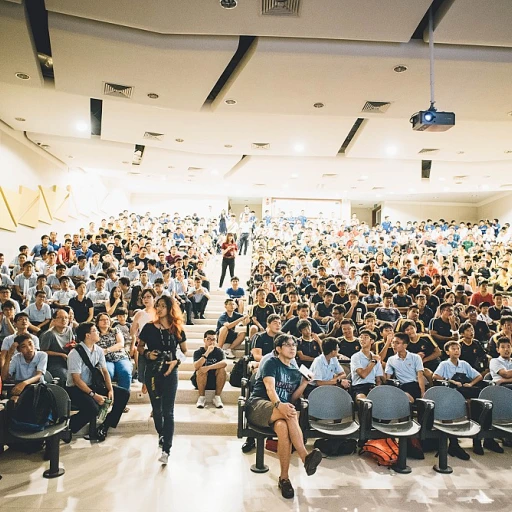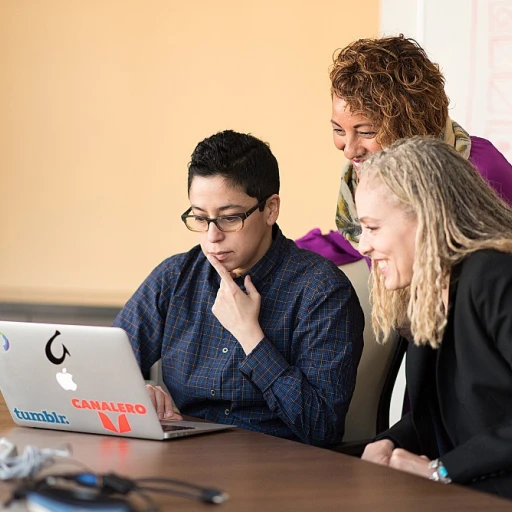
Understanding the Role of Evaluation in Mentoring
The Importance of Evaluation in Mentoring
Evaluation plays a crucial role in professional mentoring, acting as the bridge between teaching concepts and effective learning outcomes. For students involved in active learning processes, assessment provides valuable insights into their understanding and progress. A well-designed evaluation strategy helps students better grasp the course material and reinforces learning activities within class sessions.
In the context of higher education, assessments are not just about grading; they involve understanding the complexities of student learning and designing assessments that align with learning objectives. By focusing on both formative and summative assessment approaches, teachers can create a more comprehensive picture of student progress and potential areas for improvement.
With effective evaluation, students receive feedback that is not only about their work but also about how they can enhance their learning practices. Techniques such as the 'muddiest point' or 'pair share' can be integrated into class sessions to refine students' prior knowledge and their understanding of complex concepts. This active learning approach ensures students are equipped to meet the standards set by their courses.
To truly gauge success in professional mentorship, the mentorship process needs to consider the impact of assessments on student learning. This ensures that the teaching practices are not just about transferring knowledge but about empowering students to apply learning concepts effectively in real-world scenarios.
Tailoring Evaluation Techniques to Individual Needs
Focusing on Individualized Evaluation Methods
In professional mentoring, tailoring evaluation techniques to fit the unique needs of each student is a critical aspect to foster effective learning. While traditional practices in higher education often rely on a one-size-fits-all approach, an individualized strategy can greatly enhance learning outcomes. Crafting an assessment plan that respects individual learning paces and prior knowledge is vital. Recognizing the various concepts each student grapples with, and their current levels of understanding, forms a foundation for personalized assessments. To gauge this, teachers can design learning activities that encourage active learning. For instance, in-class sessions may involve pair-share exercises where students discuss and apply new concepts, thus providing immediate insight into their grasp of the material. Moreover, utilizing the principles of student assessment and feedback can illuminate areas where students excel or require additional support. Practical methods like the "muddiest point" technique, where learners identify confusing aspects of a lesson, can help in tailoring subsequent teaching practices to address specific challenges. This method also invites feedback students can actively engage with, promoting a culture of open communication. Balancing formative assessments with summative ones ensures that both the ongoing student progress and final learning outcomes are considered. By offering a mix of multiple-choice questions for quick feedback alongside more comprehensive assessments, such as referenced grading projects, mentors can offer clearer insight into the varied dimensions of student progress. Finally, acknowledging the amount of time each student may need for different tasks must inform the flexible structure of personalized evaluation. Aligning teaching strategies and course design to accommodate this variability reinforces the mentoring framework's emphasis on individualized growth and comprehensive understanding.Incorporating Feedback Mechanisms
Integrating Effective Feedback Mechanisms
Feedback is a vital component in the professional mentoring process. It serves as a bridge between teaching practices and student learning outcomes, making it crucial for student assessment. To effectively help students, mentoring programs should incorporate diverse feedback mechanisms tailored to enhance student learning and active learning. In the context of professional mentoring, feedback is not just about grading but about understanding the concepts students are grasping and where they require more time and work. The right feedback ensures that students can build on their prior knowledge, engage in reflective thinking, and actively participate in learning activities. Feedback need not be a one-way street. Institutions in higher education have shown that when students engage in "pair share" activities, they are better able to articulate their understanding of the class concepts, thus reinforcing their learning. This practice allows mentors to gauge the effectiveness of their teaching strategies. Consider integrating assessment feedback tools, such as the "muddiest point" technique, which encourages students to identify what remains unclear after a class session. This approach can guide educators to clarify difficult concepts in subsequent teaching sessions. Multiple choice questions are another effective method for quick assessment feedback. They offer educators a way to quickly assess student understanding and provide rapid feedback. However, it is important to balance this with summative assessments that offer a deeper understanding of student learning and progress. For mentors seeking to refine their feedback strategies, resources on best practices in mentoring and teaching learning suggest placing emphasis on design learning, where assessments are based on student needs and learning outcomes. For those interested in uncovering more insights into these strategies, unveiling the secrets of effective professional mentoring can be an invaluable resource.Utilizing Technology in Student Evaluation
Leveraging Technology for Enhanced Student Evaluation
In the realm of professional mentoring, technology has emerged as a powerful ally in evaluating students effectively. By integrating digital tools into the assessment process, mentors can provide a more comprehensive and nuanced understanding of student learning and progress.
One of the key benefits of utilizing technology is the ability to offer real-time feedback. Platforms that support instant communication allow mentors to address questions and provide guidance promptly, which is crucial in active learning environments. This immediate feedback loop not only helps students refine their understanding of complex concepts but also encourages continuous engagement throughout the course.
Moreover, digital tools facilitate the design of diverse assessment formats. From multiple choice quizzes to interactive simulations, technology enables mentors to create varied student assessments that cater to different learning styles. This variety ensures that assessments are not only based on rote memorization but also on the application of concepts in practical scenarios.
Technology also plays a significant role in managing and analyzing student assessment data. With advanced analytics, mentors can track learning outcomes and identify areas where students may need additional support. This data-driven approach allows for tailored interventions, ensuring that teaching practices are aligned with the specific needs of each student.
Furthermore, online platforms can streamline the grading process, saving valuable time for both mentors and students. Automated grading systems, when used appropriately, can provide consistent and objective assessments, freeing up time for mentors to focus on more personalized feedback.
Incorporating technology in student evaluation is not without its challenges. It requires careful consideration of the tools used and their alignment with the learning objectives. However, when implemented thoughtfully, technology can significantly enhance the effectiveness of student evaluations in professional mentoring.
Balancing Quantitative and Qualitative Assessment
Integrating Various Forms of Evaluation for Comprehensive Insight
In professional mentoring, adopting a multifaceted approach to student evaluation is crucial to cater to the wide array of learning outcomes. Balancing quantitative and qualitative assessments can provide a clearer picture of a student’s progress and support active learning. This approach not only enhances the teacher’s understanding of the student’s abilities but also encourages more insightful feedback. Quantitative assessments, such as multiple choice questions and standardized testing, offer a structured method to measure prior knowledge and effectiveness in grasping core concepts. These tools, albeit efficient in gauging the acquisition of specific skills, should be complemented with more qualitative methods to fully capture the complexities of student learning. Qualitative assessment techniques, such as the "muddiest point" exercise, allow students to reflect on the areas they find most challenging. Pair-share activities are also beneficial in creating opportunities for peer assessment and collaborative learning. Such methods can transform a standard class session into a dynamic learning environment that helps students explore concepts more deeply and identify areas for improvement. Combining these approaches requires thoughtful design of learning activities, ensuring they align with both the course goals and the student’s unique needs. Referenced grading can serve as an excellent bridge between quantitative scores and qualitative insights, providing a balanced view of student performance. Time management remains a critical factor when integrating various assessments. A teacher must carefully allocate the amount time dedicated to each type of assessment to maintain an effective and efficient teaching process. By blending these practices, educators can foster a more holistic approach to teaching and student assessment, ultimately aiding in the cultivation of a robust learning experience in higher education.Continuous Improvement in Evaluation Practices
Fostering a Culture of Continuous Improvement
In the realm of professional mentoring, continuous improvement in evaluation practices is essential to ensure that both mentors and students benefit from the process. This ongoing refinement is not just about adjusting techniques; it's about fostering a culture where feedback is actively sought and utilized to enhance learning outcomes.
One effective approach is to regularly revisit the evaluation methods employed. Are they still relevant to the current learning objectives? As new concepts and teaching practices emerge, it's crucial to adapt assessment strategies to align with these changes. For instance, incorporating active learning techniques, such as pair share or the muddiest point, can provide more dynamic and responsive feedback mechanisms.
Adapting to Evolving Educational Needs
As the educational landscape evolves, so too should the methods of student assessment. The integration of technology in student evaluation, as discussed earlier, is one way to keep pace with these changes. Utilizing digital tools can streamline the process, allowing for more frequent and detailed feedback, which in turn helps students to better understand their progress and areas for improvement.
Moreover, balancing quantitative and qualitative assessments ensures a comprehensive understanding of student learning. While quantitative data, such as multiple choice results, provide measurable outcomes, qualitative feedback offers deeper insights into student experiences and challenges. This balanced approach not only aids in grading but also supports the overall teaching and learning process.
Implementing Reflective Practices
Encouraging reflective practices among both mentors and students can significantly enhance the effectiveness of evaluations. By reflecting on the feedback received and the assessments conducted, teachers can identify areas for improvement in their teaching methods, while students can gain a clearer understanding of their learning journey.
Incorporating regular class sessions focused on reflection and discussion about assessment feedback can foster an environment where continuous improvement is the norm. This practice not only helps in refining evaluation techniques but also supports the development of a more engaged and motivated student body.
Ultimately, the goal is to create a dynamic and responsive mentoring environment where evaluation practices are continuously refined to better serve the needs of students and mentors alike. This commitment to ongoing improvement will not only enhance the effectiveness of the mentoring program but also contribute to the broader goals of higher education.












